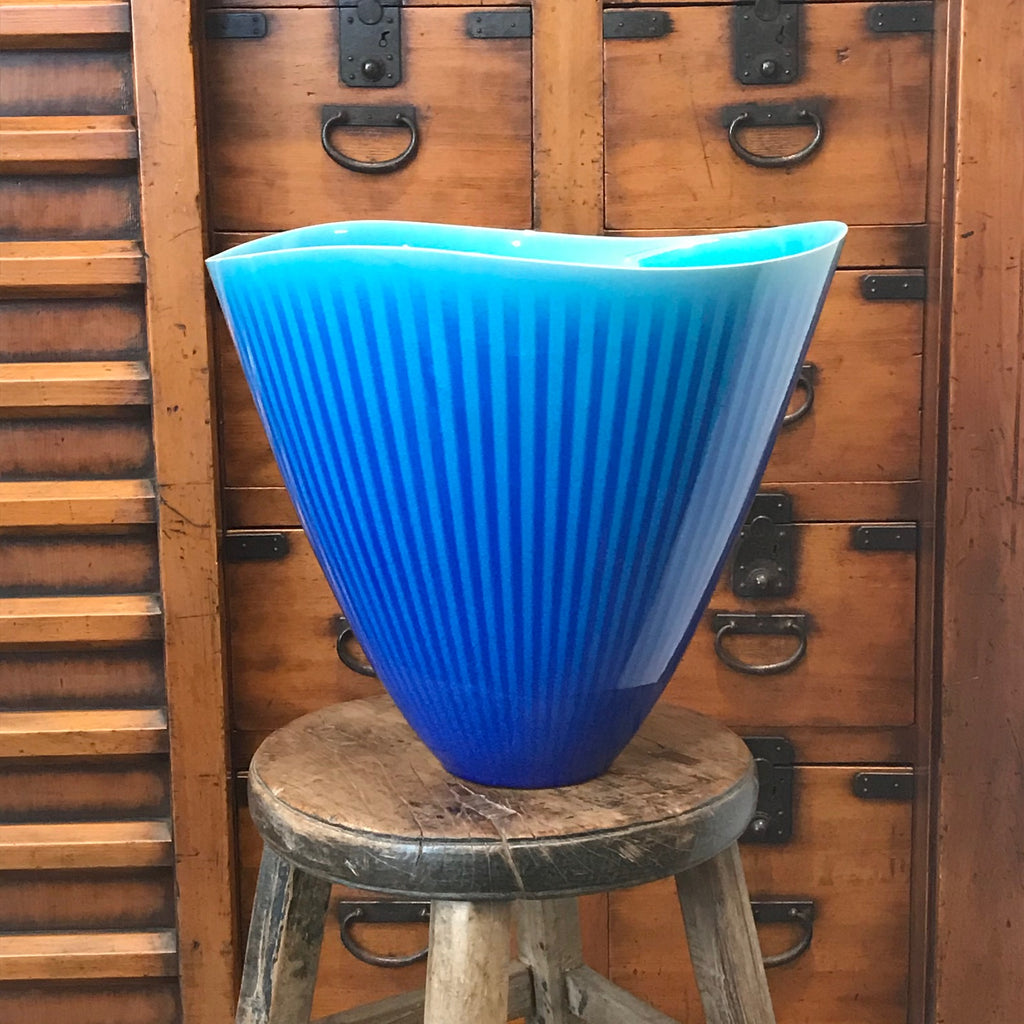 We invite you to celebrate with us and experience the unique designs that underpin our sense of aesthetics at Kazari. This exhibition is especially curated to showcase some exceptional pieces of Japanese art, antiquities and contemporary design. The collection of screens, paintings, furniture and decorative items is an amalgam of treasures including some we've had at home for thirty years or more combined with the best quality furniture, ceramics and lacquer from previous and current shipments.
We invite you to celebrate with us and experience the unique designs that underpin our sense of aesthetics at Kazari. This exhibition is especially curated to showcase some exceptional pieces of Japanese art, antiquities and contemporary design. The collection of screens, paintings, furniture and decorative items is an amalgam of treasures including some we've had at home for thirty years or more combined with the best quality furniture, ceramics and lacquer from previous and current shipments.
A pair of paintings taken from
fusuma, Japanese sliding doors, from a Buddhist temple of
Komasinu or
Shi Shi guardian lion dogs on a gold leaf ground with peonies in full bloom in a landscape. Early Edo period, 17th century.
Antique Japanese six fold screen of willow trees amid gold clouds above a stream, Early Edo period, circa 1650. Remounted in 1985. Antique Chinese Buddhist altar table made from cypress wood with an elaborate deep carved floral apron. Yuan Dynasty, 14th century. Upper drawers have been replaced.
Hand-carved Javanese wooden sculpture of a chimpanzee, circa 1960. On an irregular shaped contemporary coffee table made from semi petrified wood.
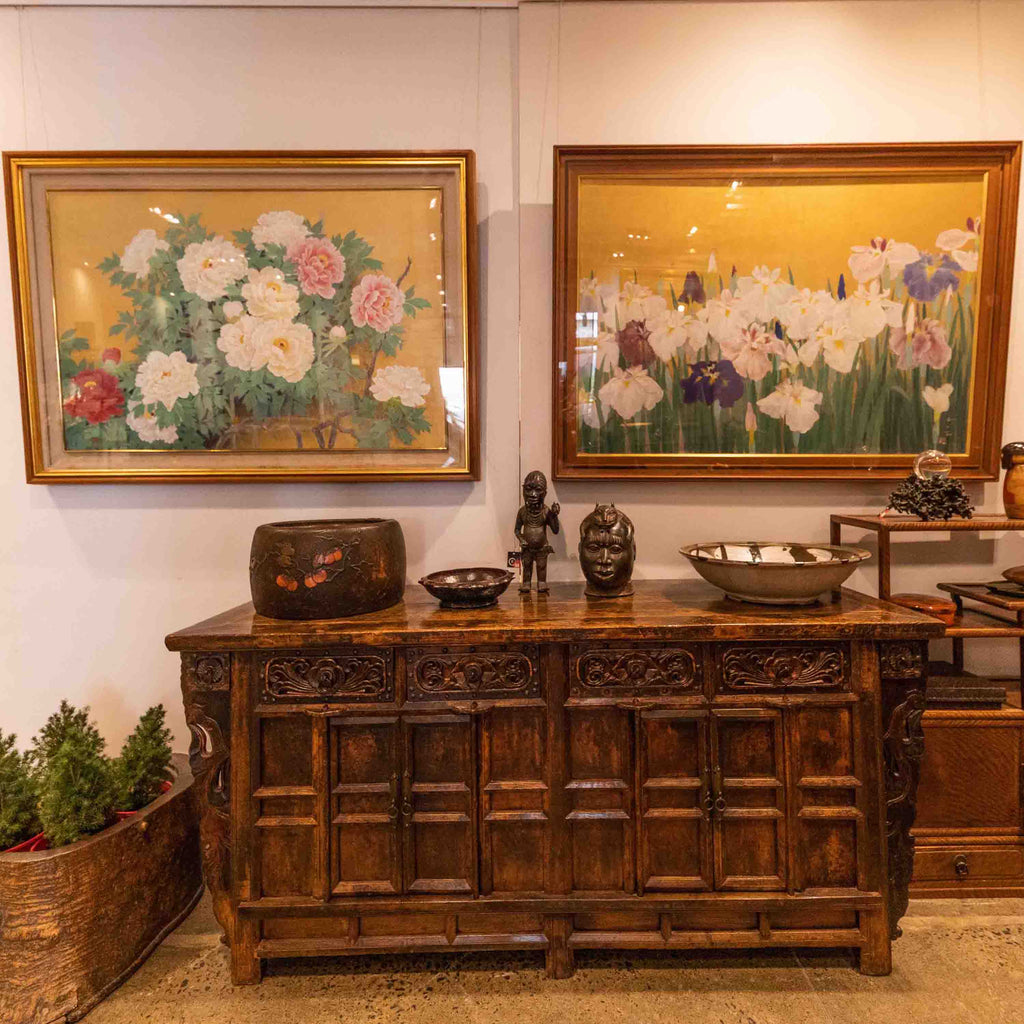
Peonies on gold ground, delicately painted, Taisho period, circa 1920. Painting of Irises on gold ground, signed with artist seal. Taisho period, circa 1920. Antique Chinese carved sideboard, made from elm, 18th century.
Chinese red lacquer cabinet with a temple landscape in gold. Middle Ching dynasty, Qianlong 18th century.
One of a pair of Chinese subject screens in a temple landscape with embossed gold clouds. From the Momoyama period circa 1568-1600. Underneath a painted buddhist altar table from Gansu province 18th century.
Shino pottery tea bowl for Japanese tea ceremony, circa 1960.
An unusual example of a Japanese merchants chest with six drawers, made from cypress and cedar woods. Meiji period, 19th century.
Various ceramic vases and bowls and a large selection of exceptional Japanese bronze vases of different shapes and patinas, some with silver inlay circa 1920-1970.
Contemporary teak bookshelf.
Shinto female deity with inset glass eyes. Gesso on wood with an original black lacquer base, circa 1700.
Large contemporary vase called 'Typhoon Tsubo' by Murata Makoto with original paulownia box.
Japanese Negoro style lacquer tea cabinet, cha dana, for the storage and display of tea utensils from a temple. Edo period, 18th century.
An articulated hand carved and lacquered
Japanese mask of a
Koma inu, 20th century.
Red lacquer bowl, Edo period, circa 1850.
Rare Japanese shop storage chest for storage of documents and receipts. Made with a cypress case and facade and a paulownia interior with fine quality hardware. Edo period, circa 1850.
A scholar's object,
Object of contemplation, a glass ball on a simulated rock made from bronze. Early 20th century.
Japanese black lacquer tea ceremony cabinet fitted with trays, red lacquer cake plates and sencha teapots. Silver hardware, 20th century. Sits atop an unusual rare Japanese Karuma dansu, wheeled storage chest from Akita, black lacquer on zelkova wood with cedar panelling. Meiji period, 19th century.
Paulownia wood hibachi (charcoal brazier) decorated with persimmon motif made from inlaid painted buffalo horn and leaves of inlaid mother of pearl. Meiji period (1868-1912)
Pair of Chinese porcelain models of mythical beasts. 20th Century.
Red lacquer ju bako four tiered food box entirely covered with raised maki-e lacquer design of peaches. Meiji period, 19th Century.
Pottery mizusashi water pot with an exceptional Shino glaze, in the shape of a well bucket with a black lacquer lid, used for tea ceremony. 20th century.
Wooden hibachi (charcoal brazier) made from the section of a tree. Meiji period, 19th century.
Negoro style make up box, Meiji period, late 19th century.
Set of four framed paintings, originally from a screen, of Chinese children on a silver leaf ground framed by ex Canberra National Gallery framer Lloyd Reeves, late 18th century.
Ethnicraft sideboard, made from European oak.
 A pair of peacock screens by Imao Keinan
A pair of peacock screens by Imao Keinan (1845-1924), who became a member of the Imperial Academy of Fine Arts in 1919, both signed and sealed, Taisho period, circa 1915. Black lacquer Chinese Buddhist altar table, Ming dynasty, 16th century.
Japanese porcelain turquoise striped studio bowl by Atsushi Miyanishi
Statue of Daikoku, God of Household Wealth, polychrome on wood. Meiji period, circa 1900.
Rare Japanese carved wood sculpture depicting the deity Dakini-ten an uncommon figure closely linked to the Shinto God Inari, a divine being associated with fertility, agriculture, industry, rice, tea and sake. Momoyama period, late 16th century.
Shachihoko, a mythical beast, with the head of a tiger and the body of a fish, Seto pottery, Meiji period late 19th century.
Japanese Hagi pottery vase by award winning artist, Yamato Tsutomu (b.1945) from Yamaguchi prefecture. His works are in the British Museum and the Asian Art Museum in San Francisco.
We are currently updating our website with stock from the latest Japanese shipment so please check back regularly to see what's new. If you would like to enquire about any items in our exhibition that are not listed on our website, please call 03 9510 2528. The gallery is closed for the time being, but private appointments can be made to view the exhibition adhering to current social distancing regulations.
Please note that the store and warehouse will be closed over the Easter long weekend.
 We invite you to celebrate with us and experience the unique designs that underpin our sense of aesthetics at Kazari. This exhibition is especially curated to showcase some exceptional pieces of Japanese art, antiquities and contemporary design. The collection of screens, paintings, furniture and decorative items is an amalgam of treasures including some we've had at home for thirty years or more combined with the best quality furniture, ceramics and lacquer from previous and current shipments.
We invite you to celebrate with us and experience the unique designs that underpin our sense of aesthetics at Kazari. This exhibition is especially curated to showcase some exceptional pieces of Japanese art, antiquities and contemporary design. The collection of screens, paintings, furniture and decorative items is an amalgam of treasures including some we've had at home for thirty years or more combined with the best quality furniture, ceramics and lacquer from previous and current shipments.





 Peonies on gold ground, delicately painted, Taisho period, circa 1920. Painting of Irises on gold ground, signed with artist seal. Taisho period, circa 1920. Antique Chinese carved sideboard, made from elm, 18th century.
Peonies on gold ground, delicately painted, Taisho period, circa 1920. Painting of Irises on gold ground, signed with artist seal. Taisho period, circa 1920. Antique Chinese carved sideboard, made from elm, 18th century.



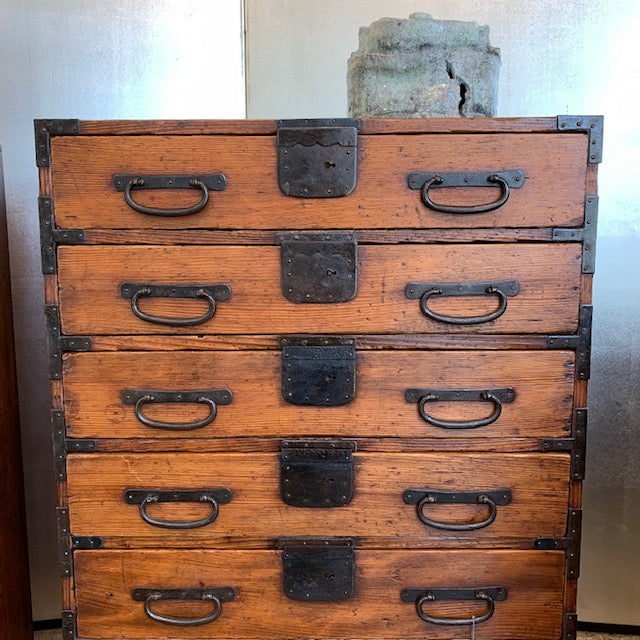








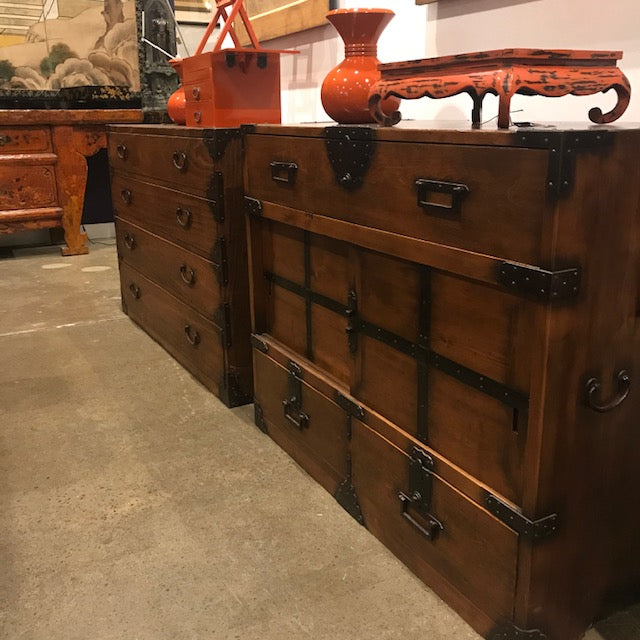



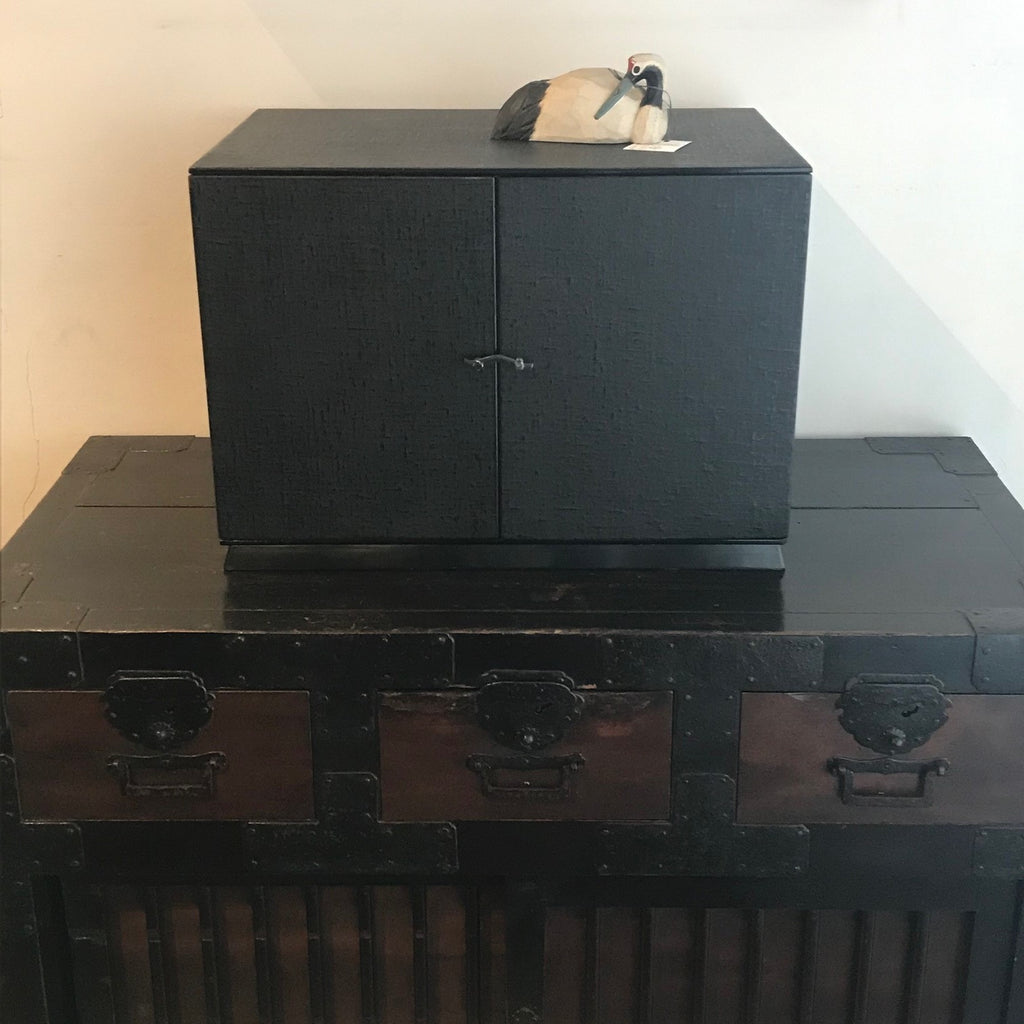










 A pair of peacock screens by Imao Keinan (1845-1924), who became a member of the Imperial Academy of Fine Arts in 1919, both signed and sealed, Taisho period, circa 1915. Black lacquer Chinese Buddhist altar table, Ming dynasty, 16th century.
A pair of peacock screens by Imao Keinan (1845-1924), who became a member of the Imperial Academy of Fine Arts in 1919, both signed and sealed, Taisho period, circa 1915. Black lacquer Chinese Buddhist altar table, Ming dynasty, 16th century.
